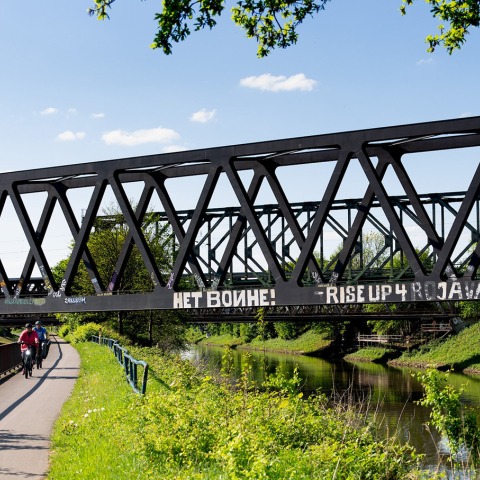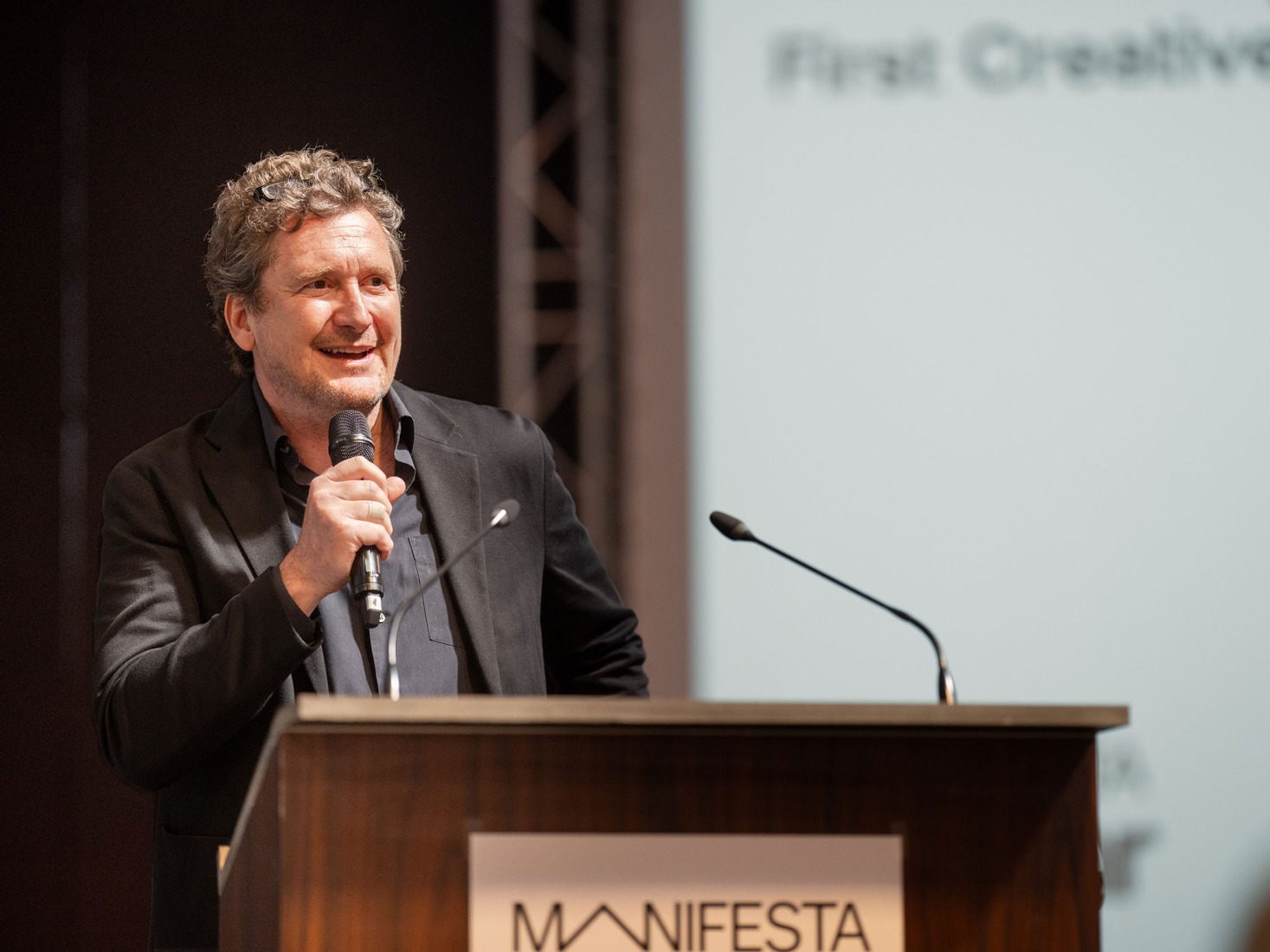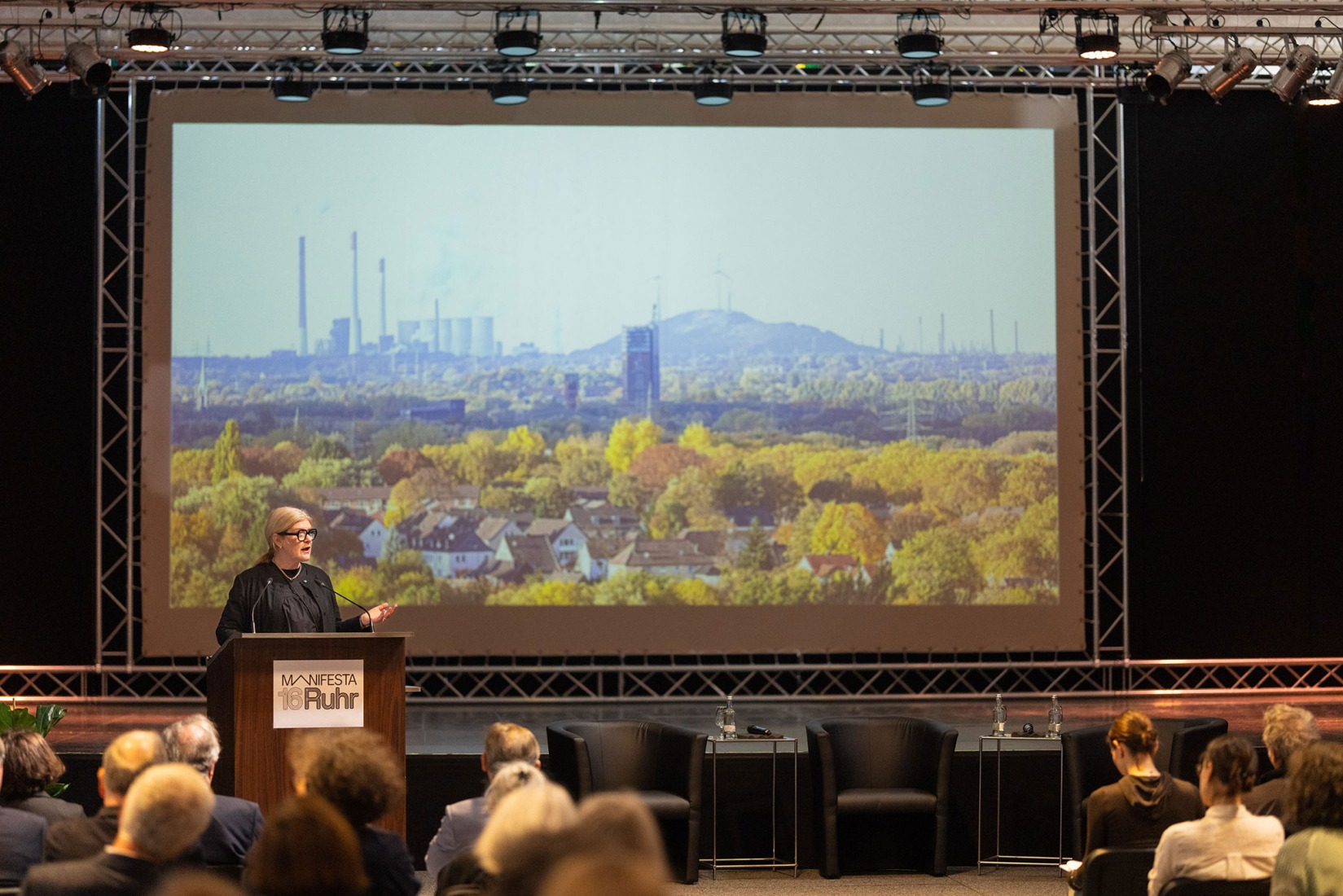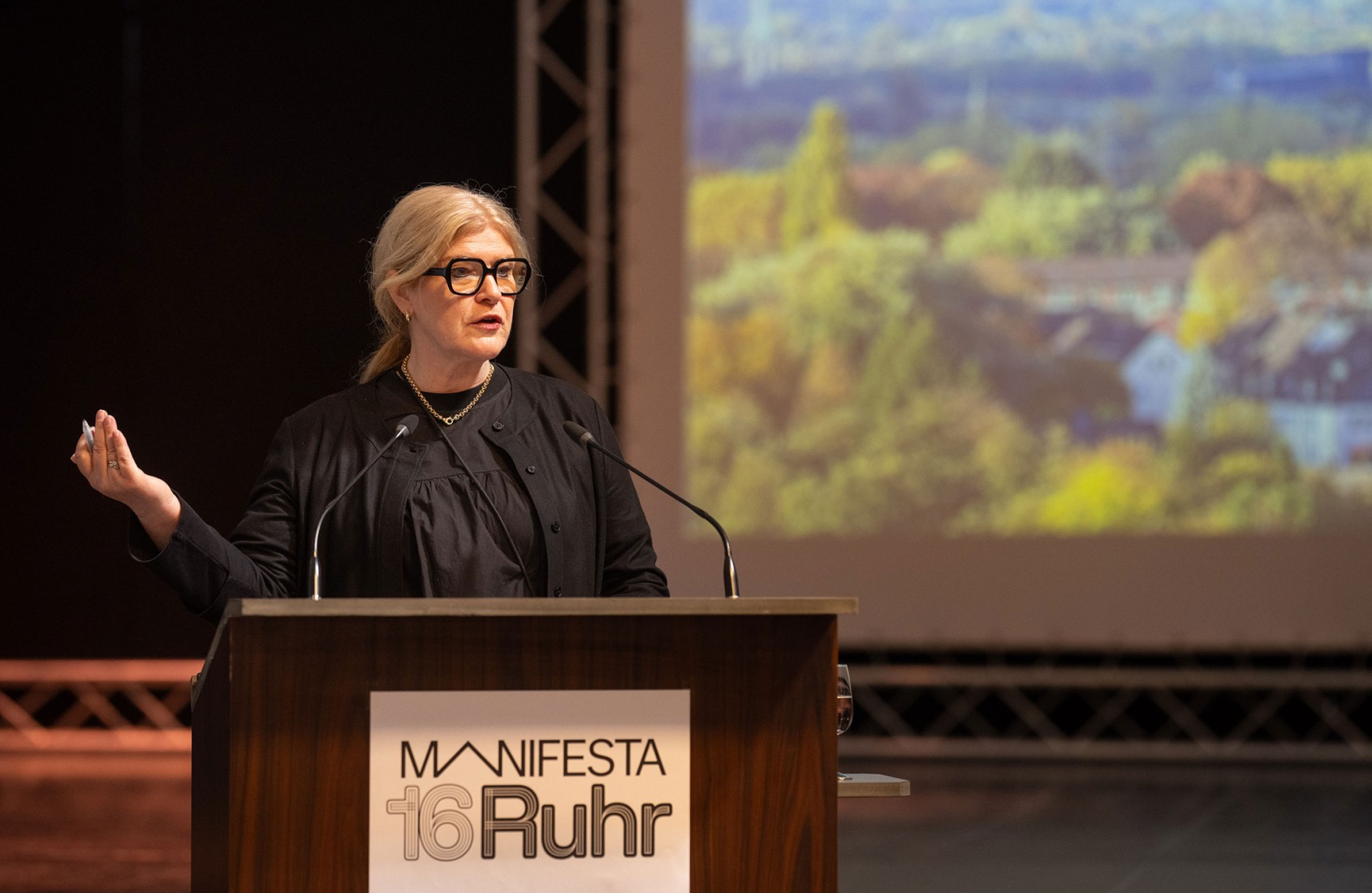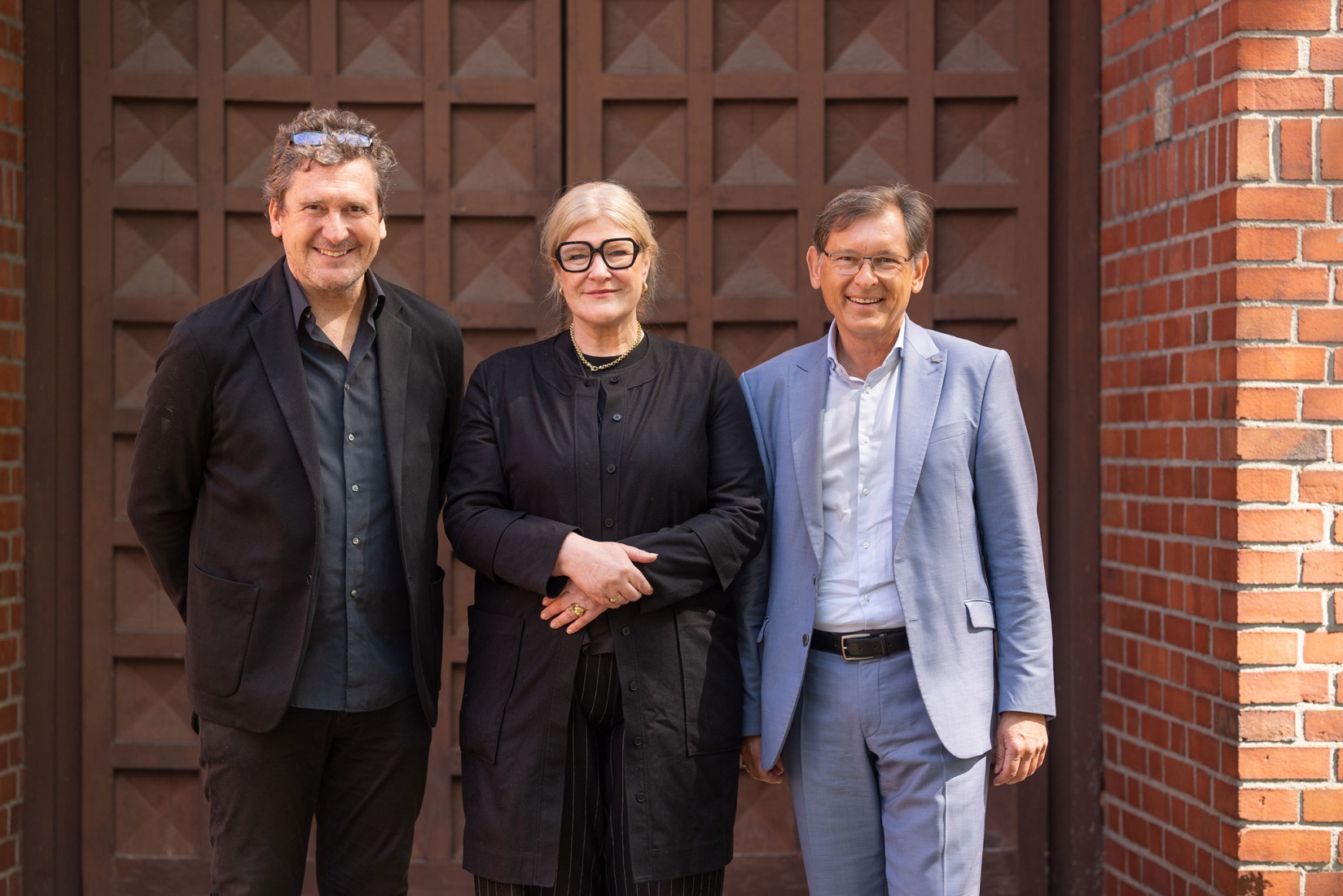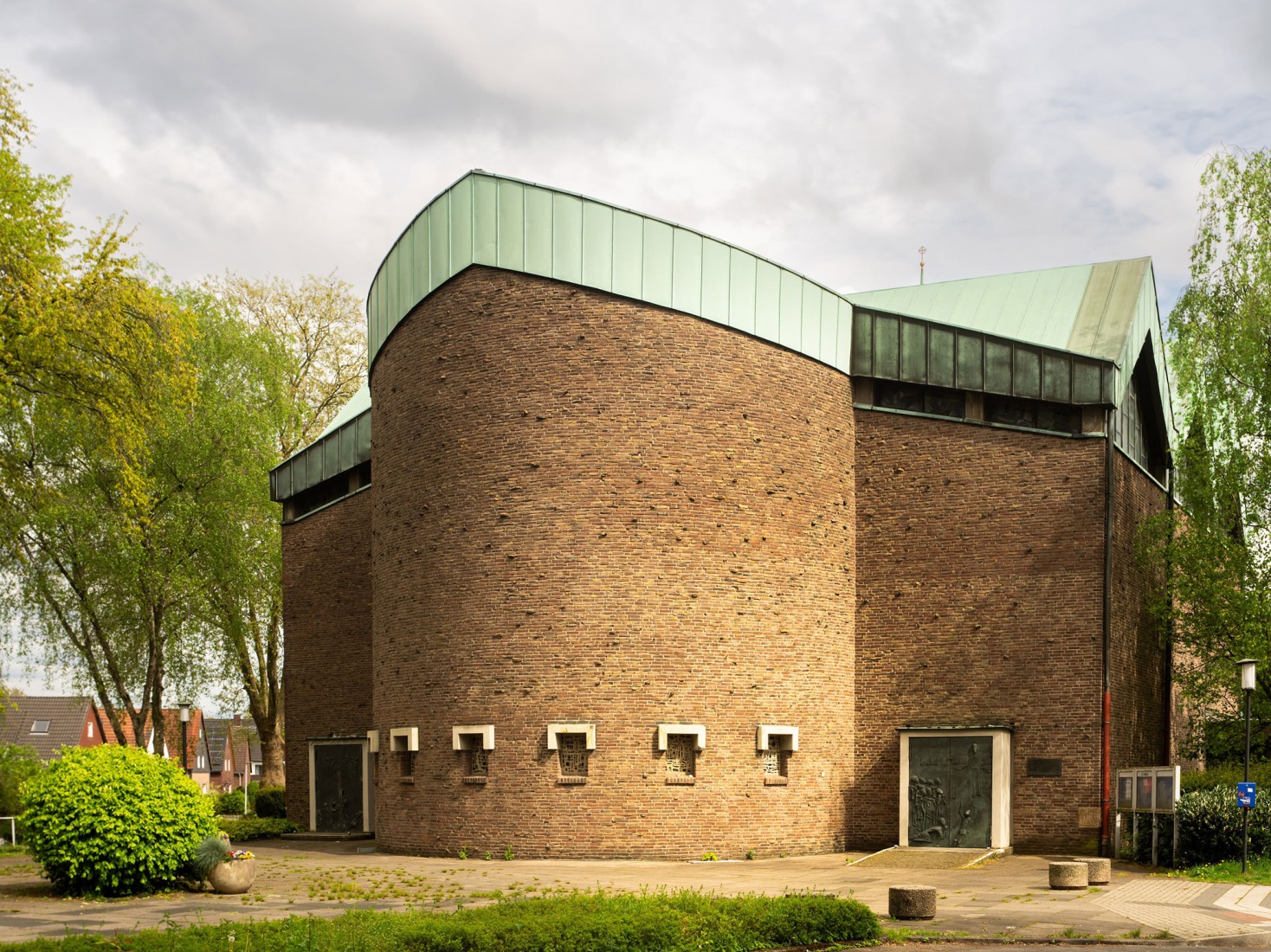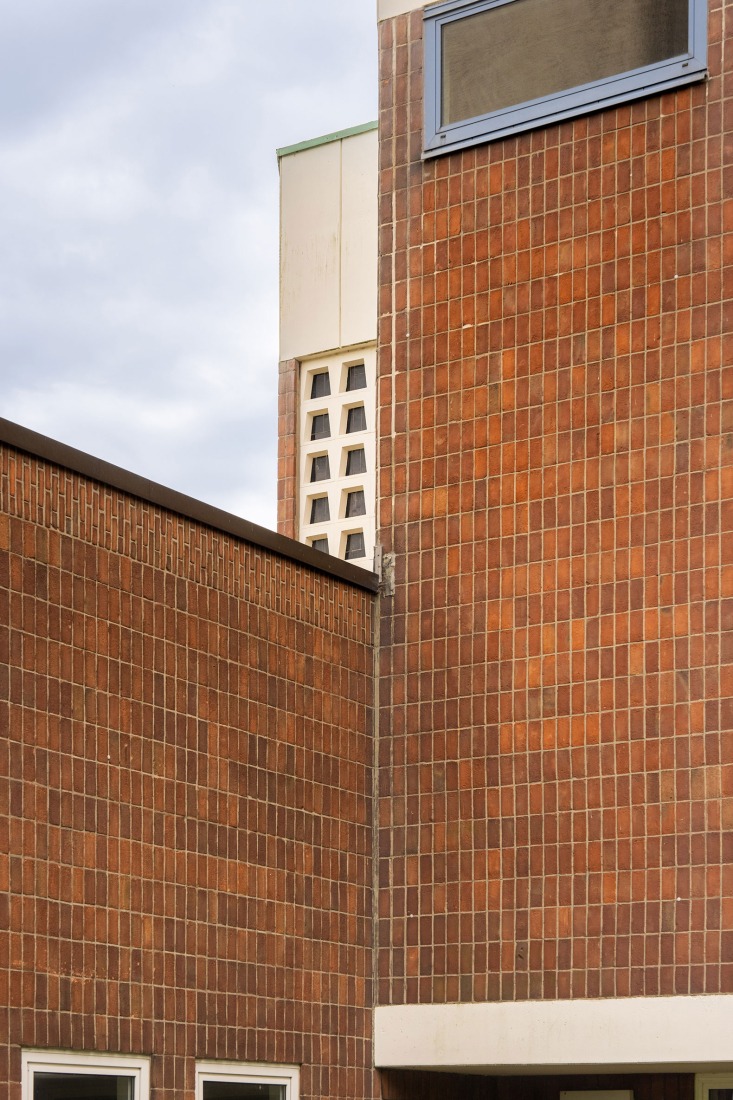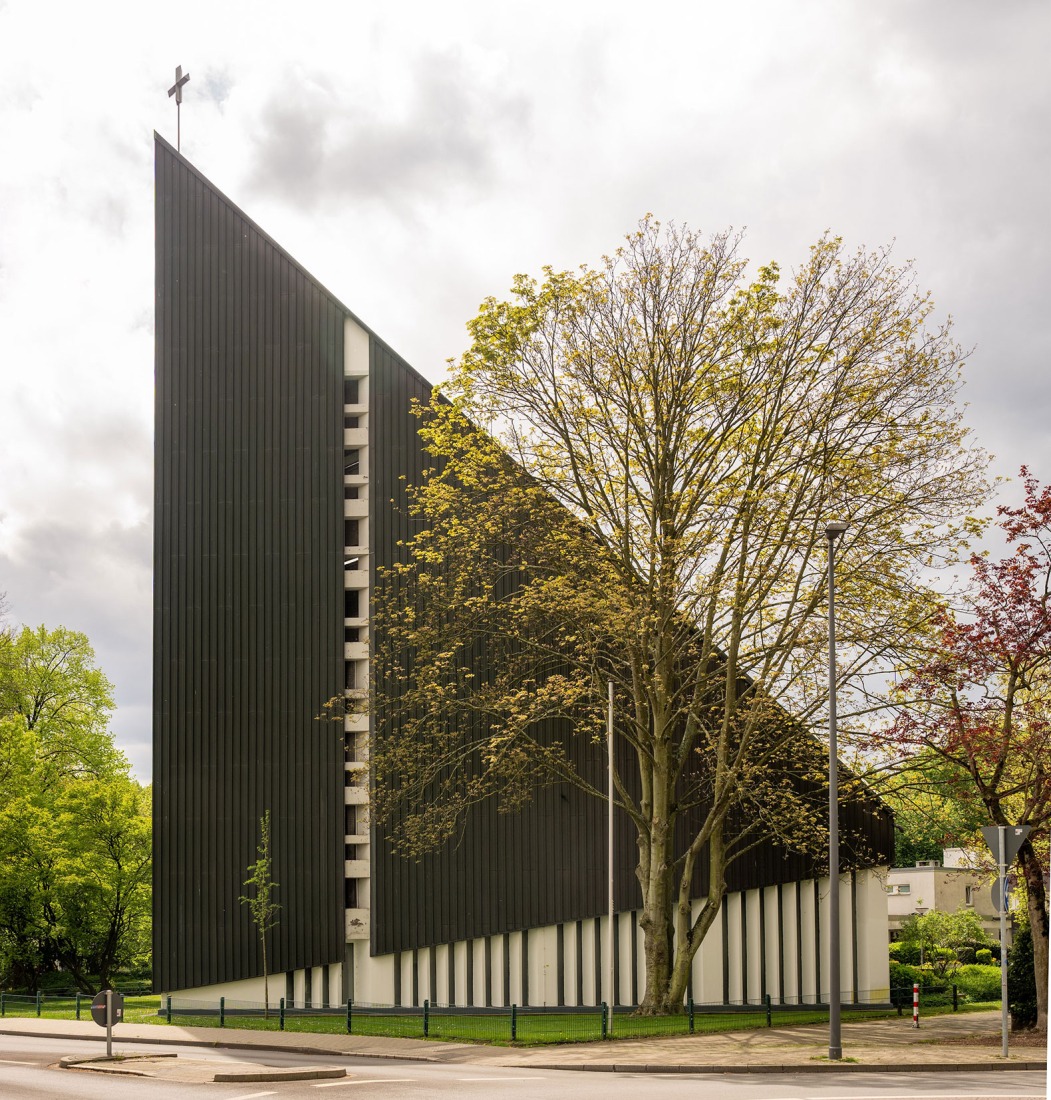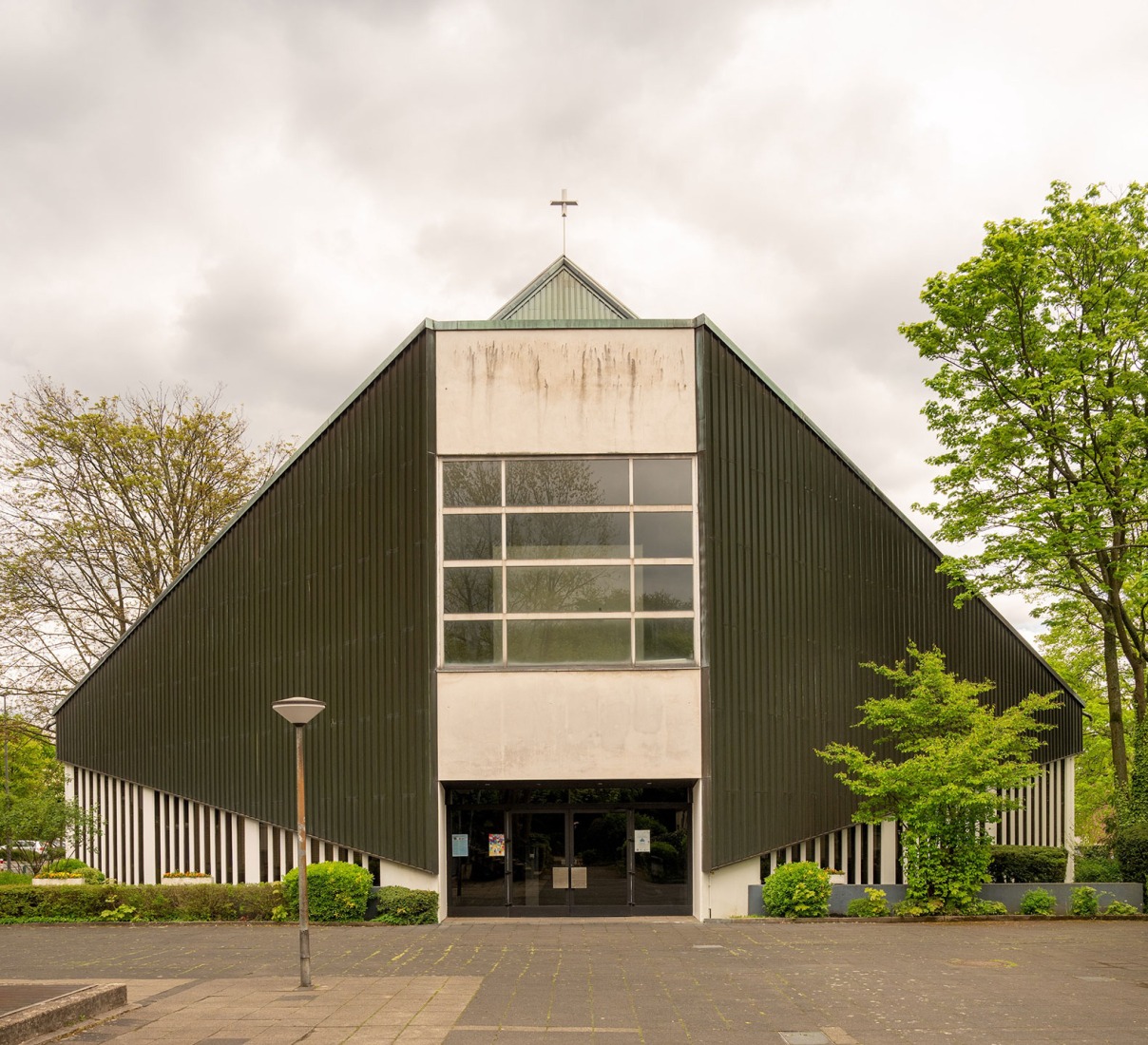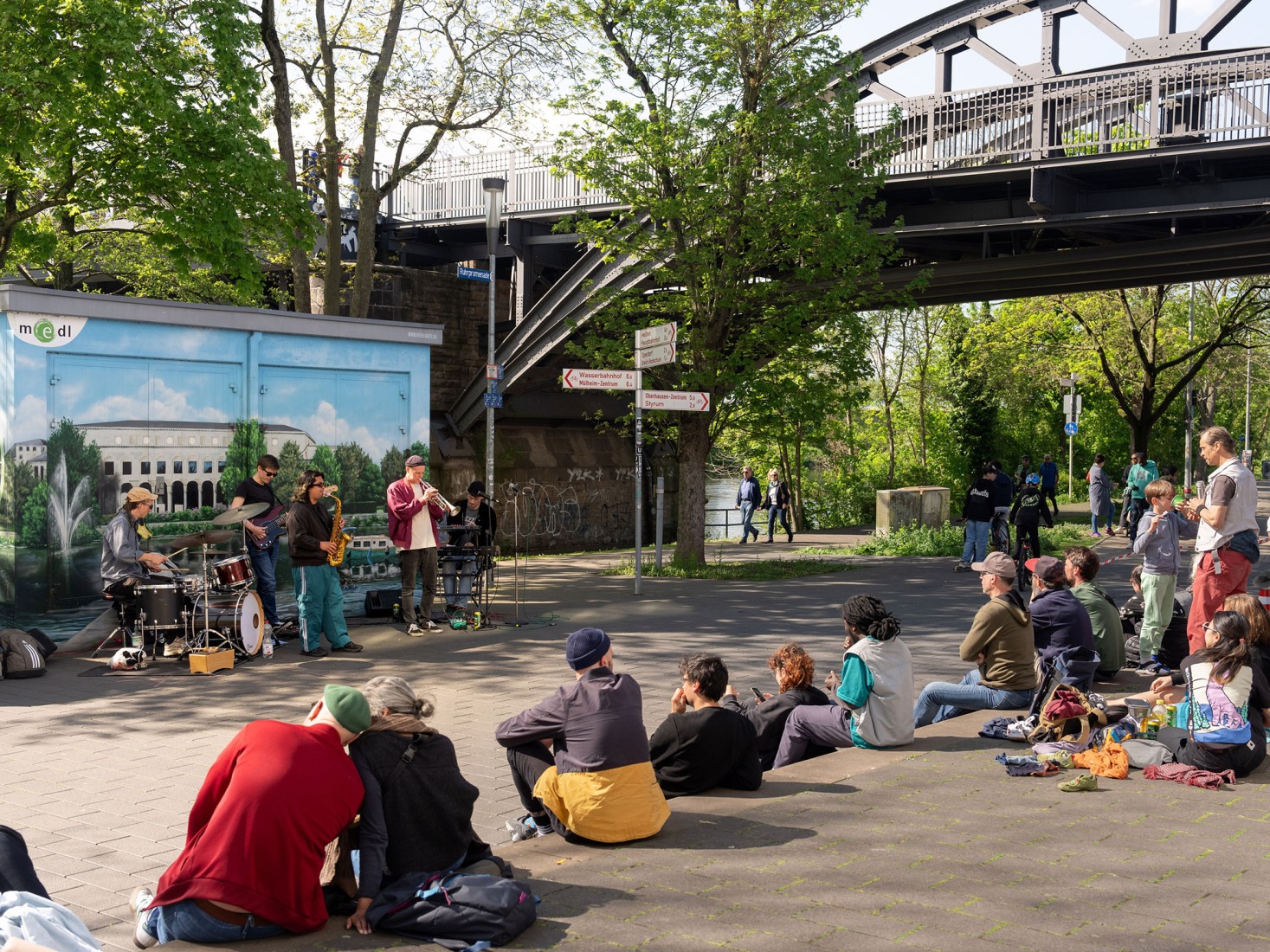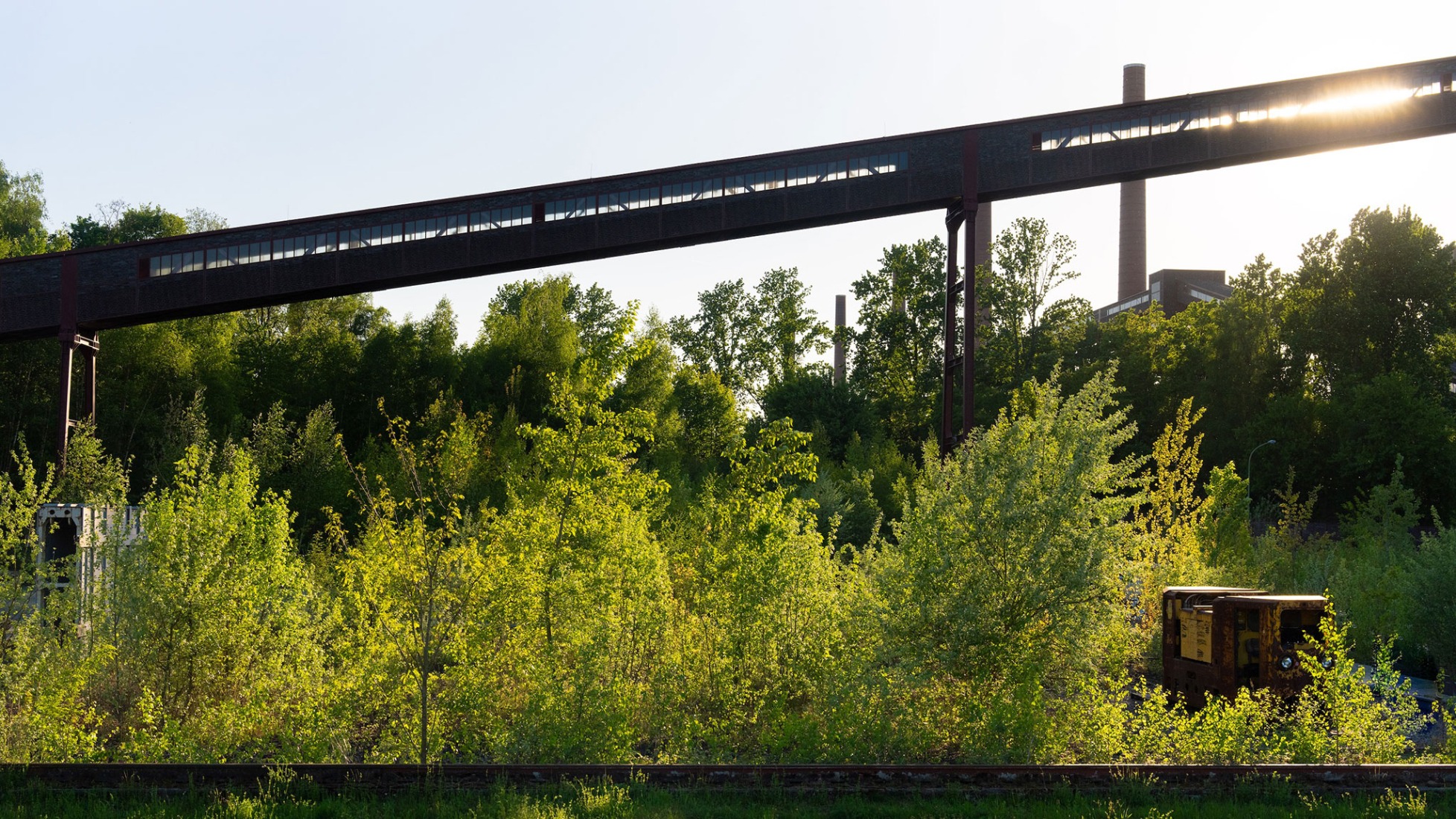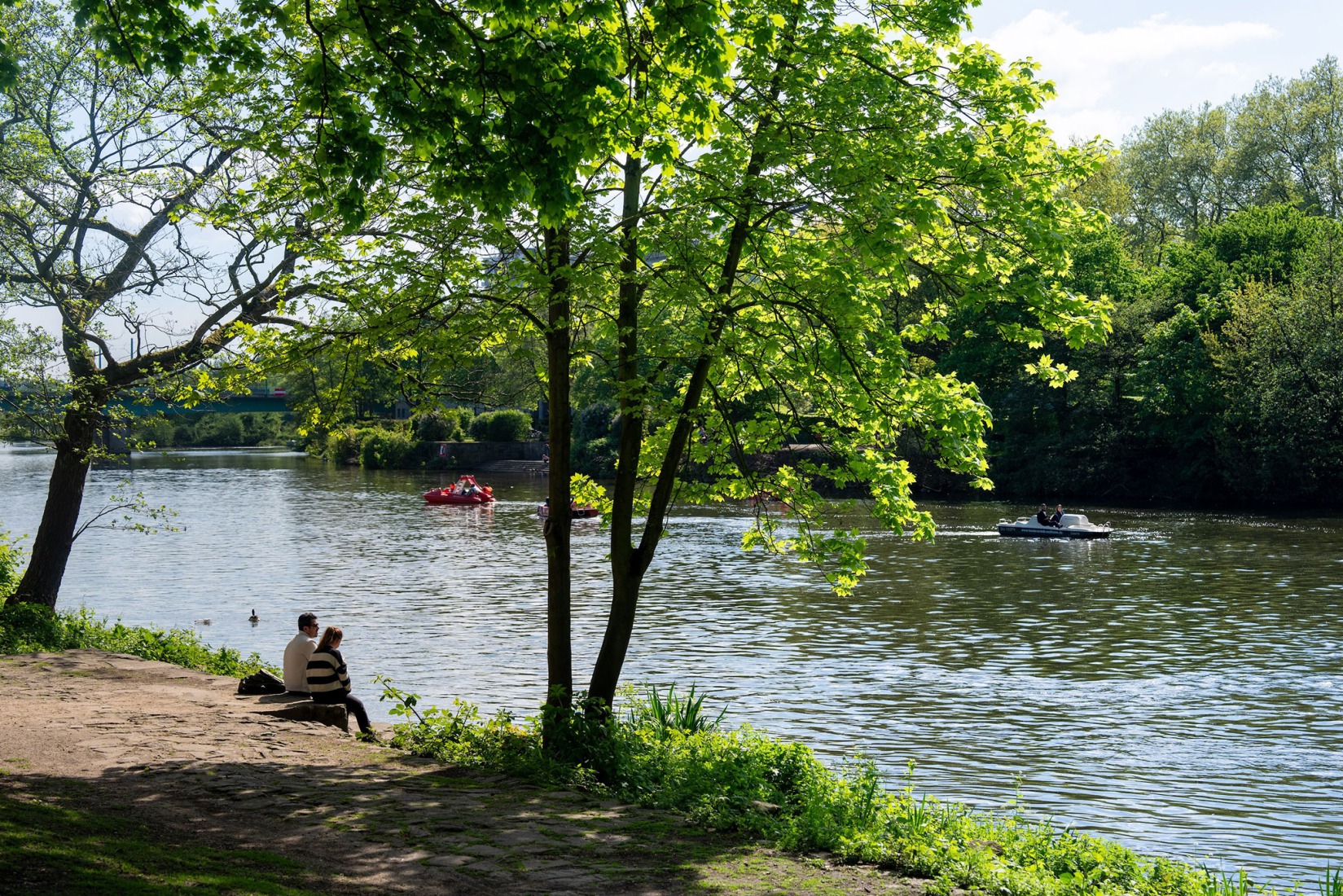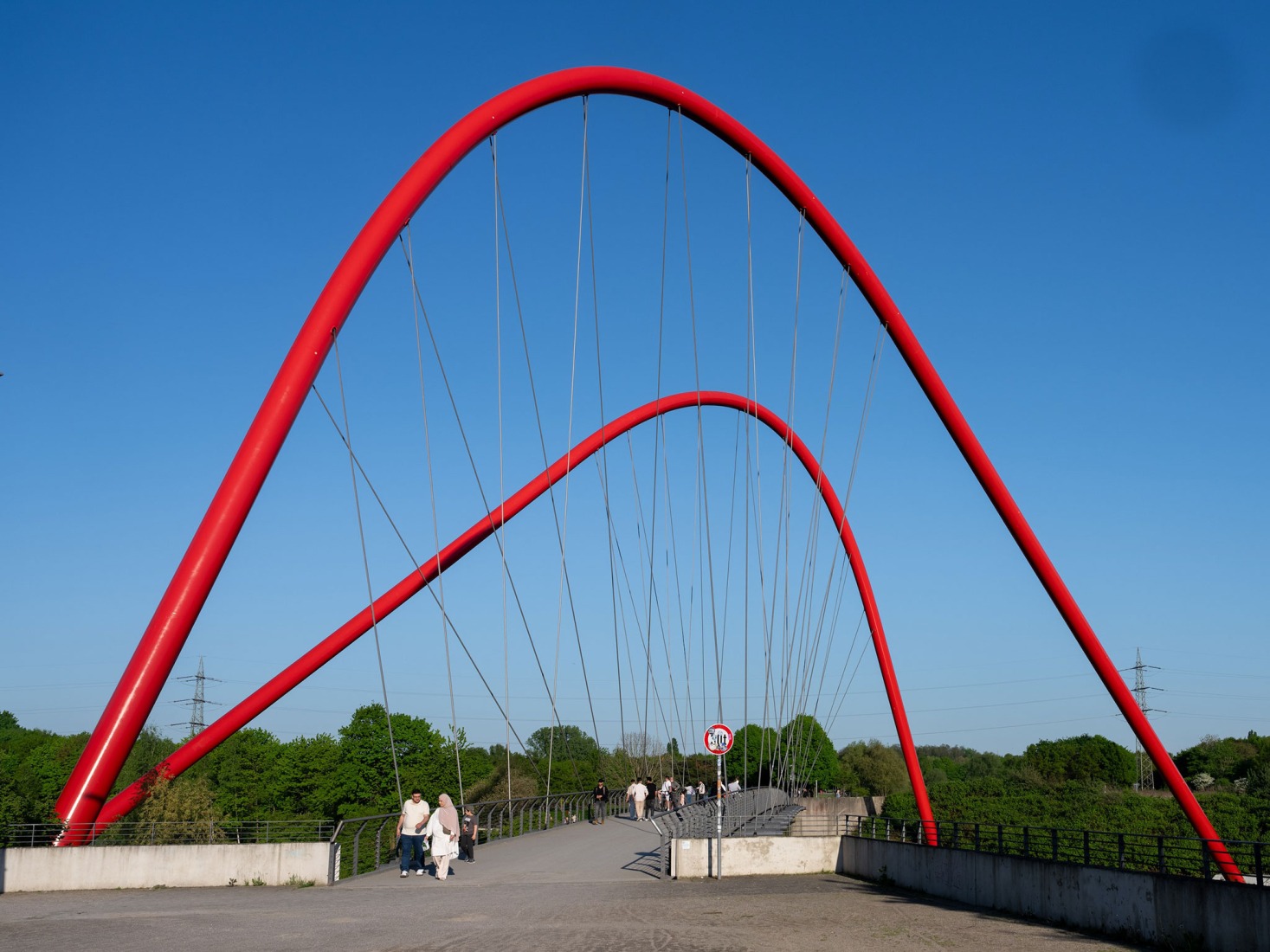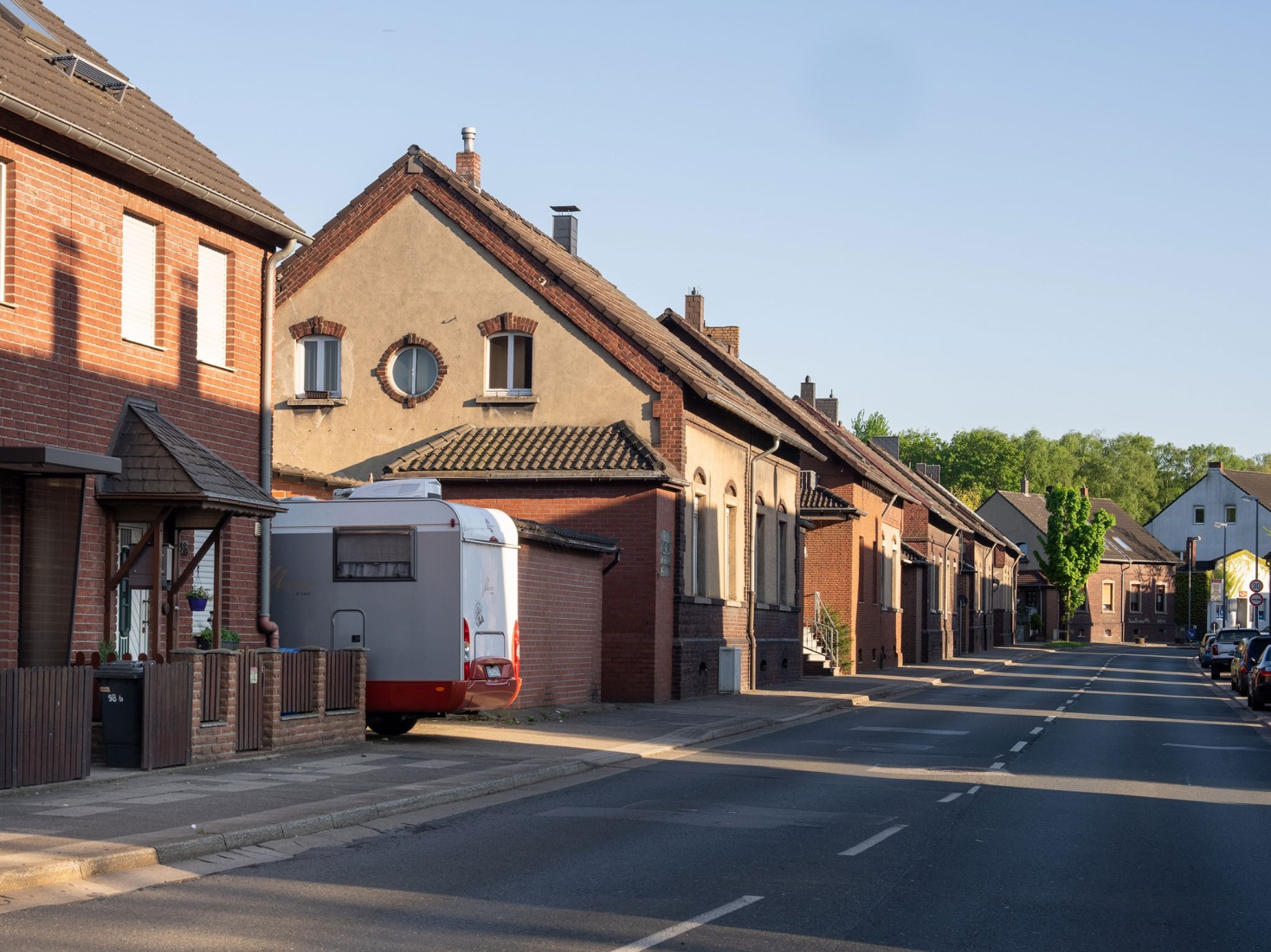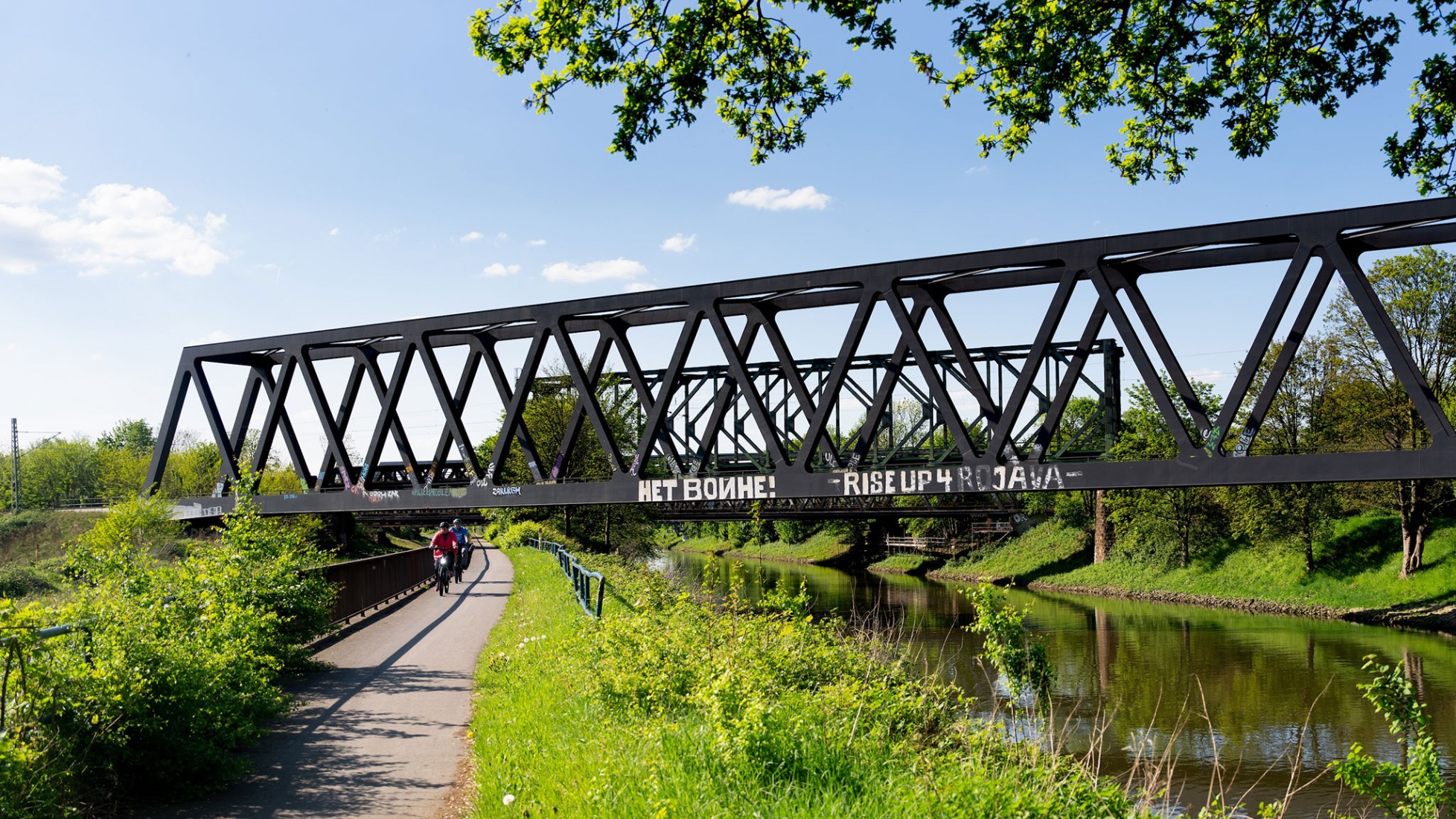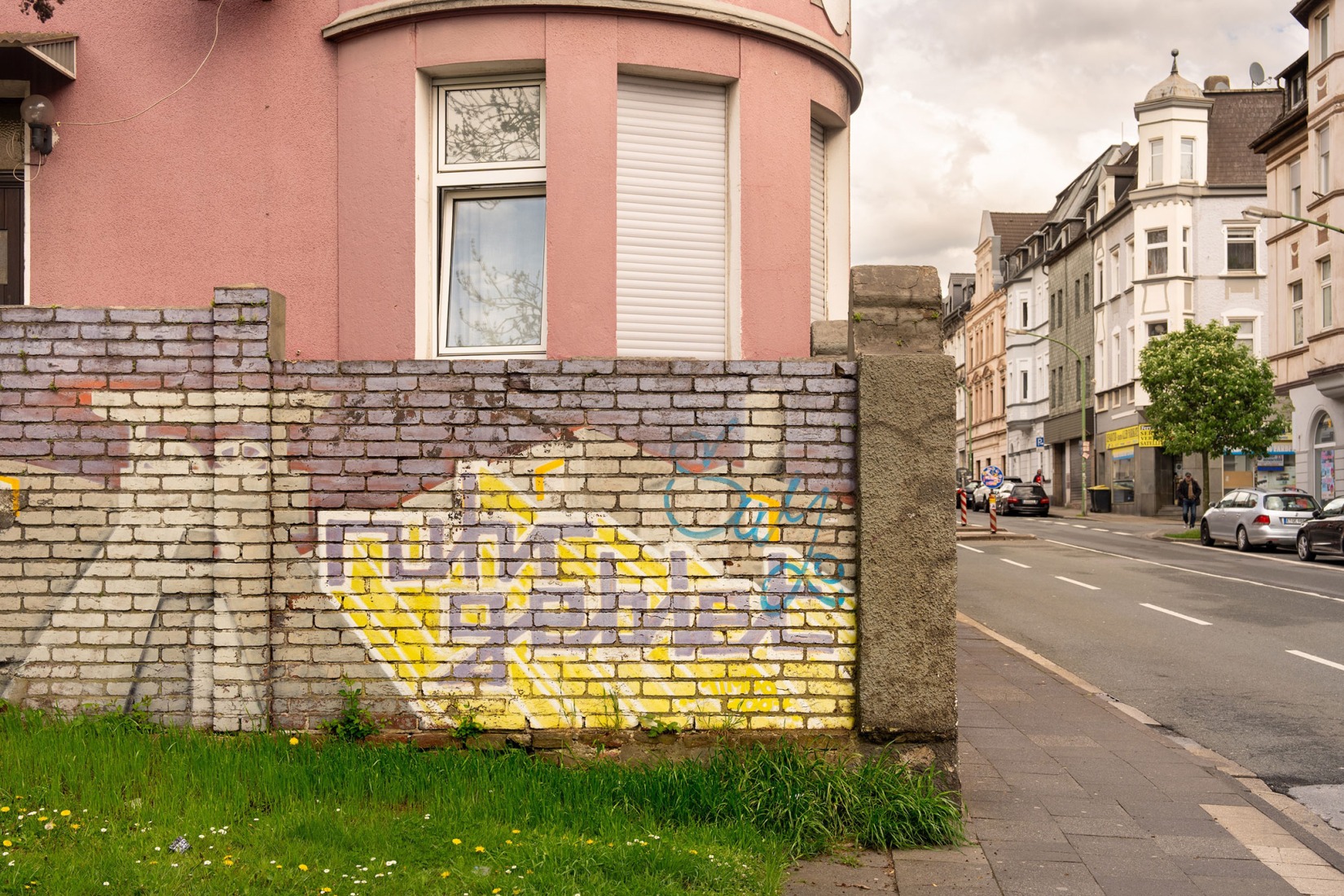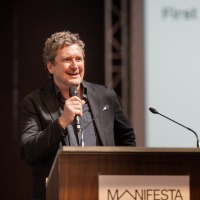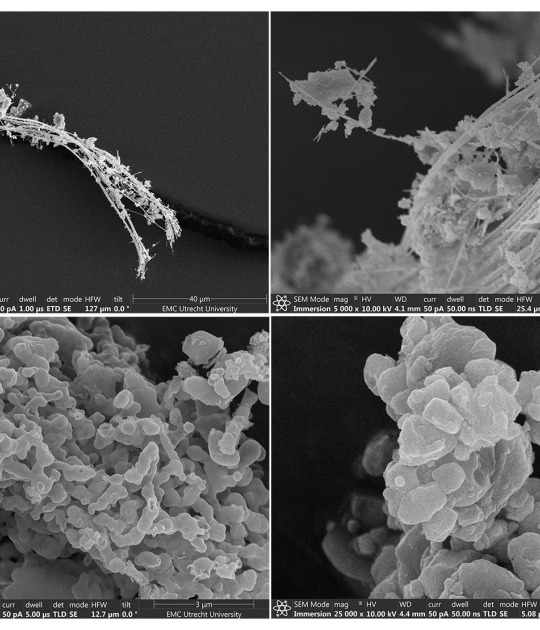The Ruhr Area stands out among European metropolises for not revolving around a single urban center, but rather for its polycentric structure. With an industry based on mining and steel production, this area underwent a major transformation following the decline of its industries, giving rise to stark contrasts. On the one hand, there are neighborhoods plagued by unemployment, segregation, and socioeconomic insecurity, and on the other, there are areas bursting at the seams thanks to large-scale investments converting industrial buildings into cultural and creative centers.
Since its official designation as the "Ruhr Metropole" in 2010, this area has exemplified both tensions and opportunities. It is a polycentric territory that faces a dual challenge of integrating into the global economy without losing the neighborhoods that have been centers of community life in the past.
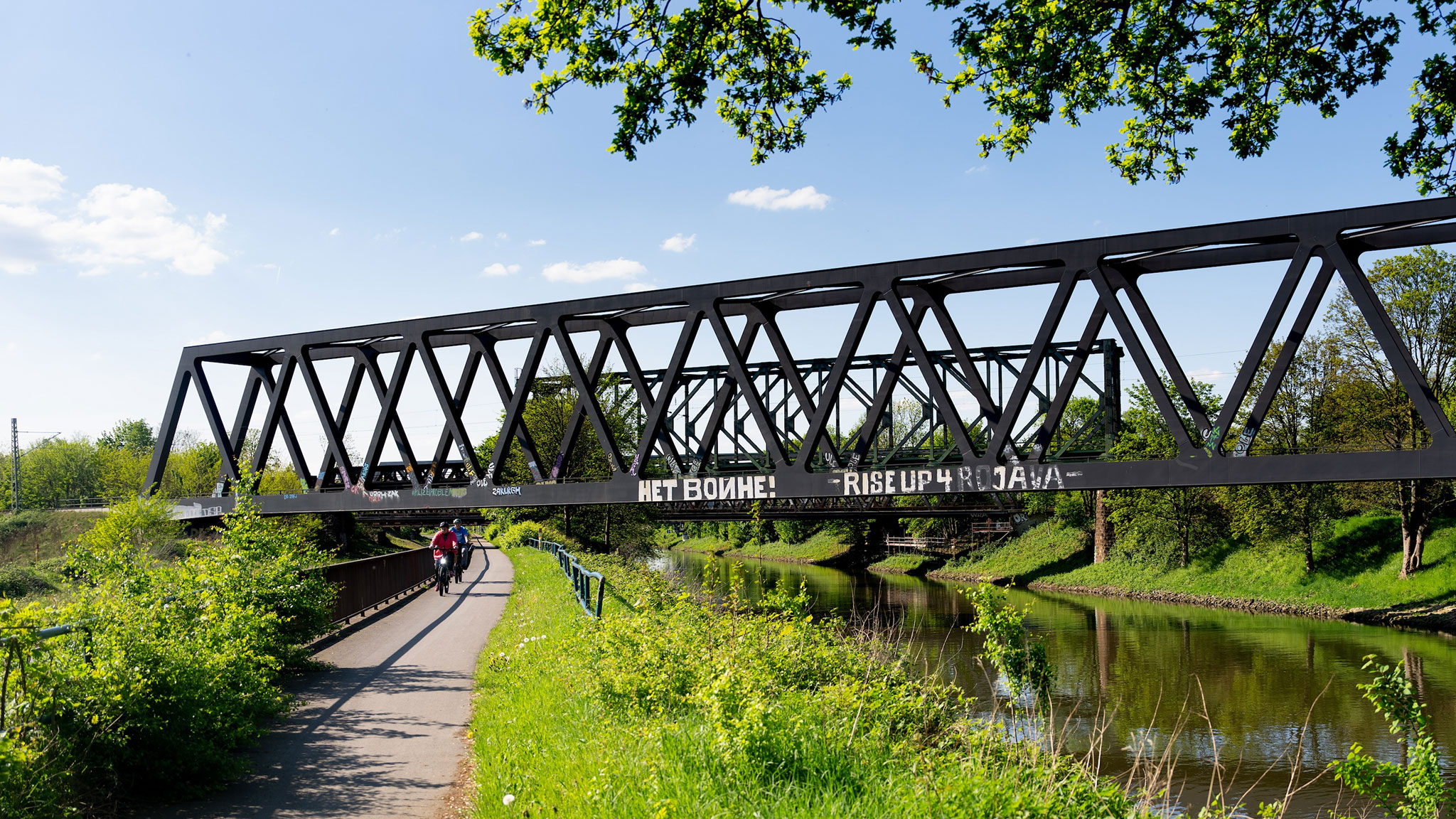 Cycle Path across the Double-Arch Bridge, Gelsenkirchen. Photograph by Dirk Rose.
Cycle Path across the Double-Arch Bridge, Gelsenkirchen. Photograph by Dirk Rose.
In this edition, Manifesta 16 Ruhr will focus on the architectural and social renewal that took place in the Ruhr Area after the war, a period marked by the construction of modern churches in response to the need for reconstruction and rapid population growth. During this period, churches became symbols of democracy and examples of civic participation, as many were built with the help of local residents.
Over the years, churches have seen their religious attendance gradually decline, leading to abandonment or disuse of the structures. Manifesta 16 Ruhr will explore ways to transform these religious temples into community centers for artistic and social practices, similar to the public space functioned by Roman basilicas and the Agora. The biennial's process aims to investigate the potential of these spaces in neighborhoods as social hubs.
“One of the urgent questions we’re addressing in this 16th edition of Manifesta—relevant not only for Germany but globally—is how art, culture and architecture can offer new perspectives on former church buildings, which are closing their doors at a rapid rate. How can these spaces, once sacred, now serve as vital sites for community life and social cohesion? ‘This is not a church’ was our starting point—but the real question is: what can it become?”
Hedwig Fijen, Director Manifesta 16 Ruhr.
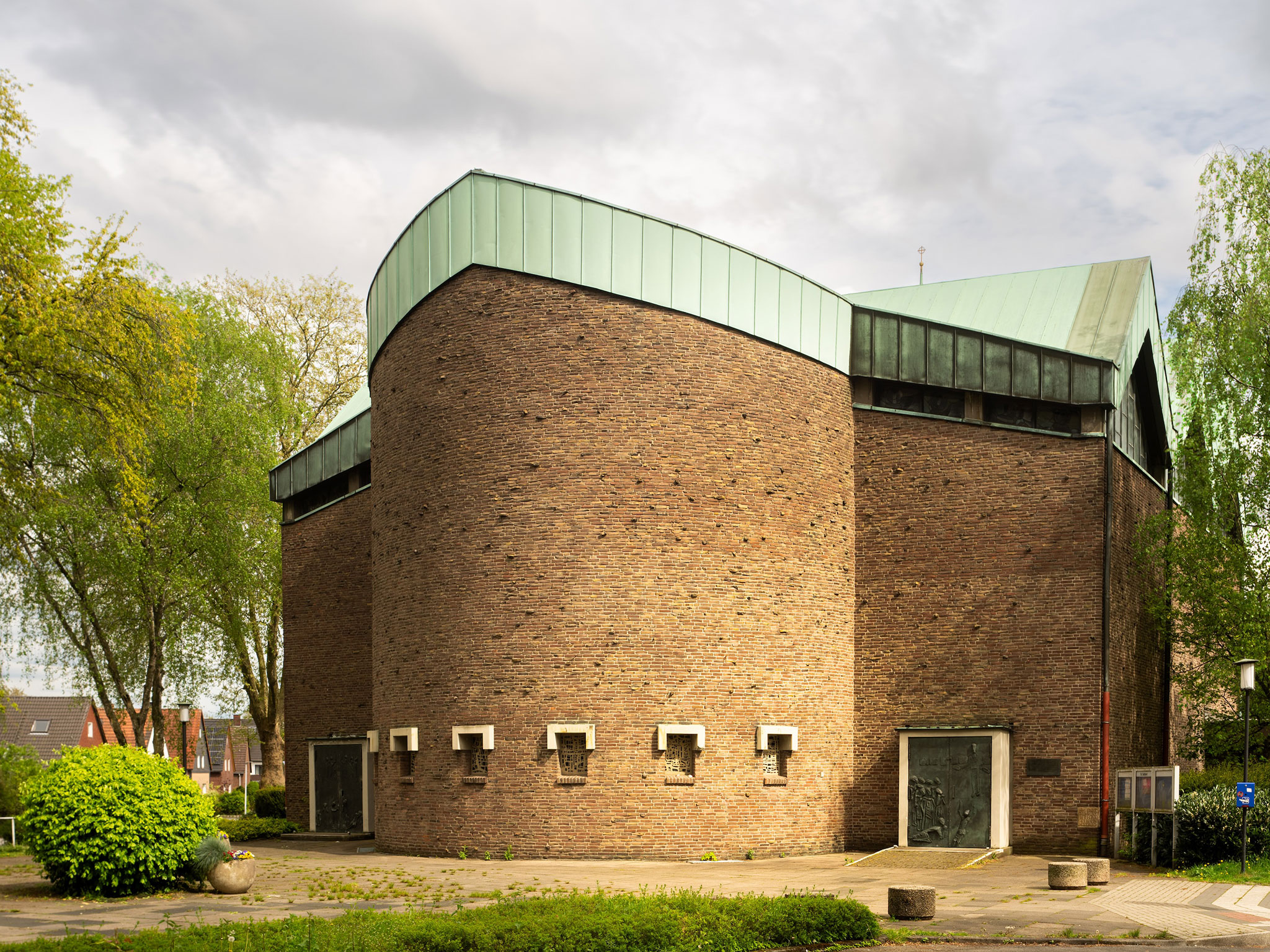 Former Church of St Suitbert, Gelsenkirchen. Photograph by Dirk Rose.
Former Church of St Suitbert, Gelsenkirchen. Photograph by Dirk Rose.
In the pre-biennial process, starting in May 2025, a series of citizen consultations will take place to involve local residents and the community in the development of the biennial program. This is one of the central elements of this phase, where people can contribute ideas on themes and proposals within an urban vision. The results of these consultations will be published in September 2025, which will influence the participatory creative mediation process.
During this pre-biennial process, a call for proposals will also be launched in the summer of 2025 for local social initiatives to contribute to the Manifesta 16 Ruhr program. The selected initiatives will be presented alongside the main biennial venues and will help to create a more community-oriented approach. These projects, along with the new creative mediators, the artistic program, and the list of participating cities, will be published in early autumn 2025.
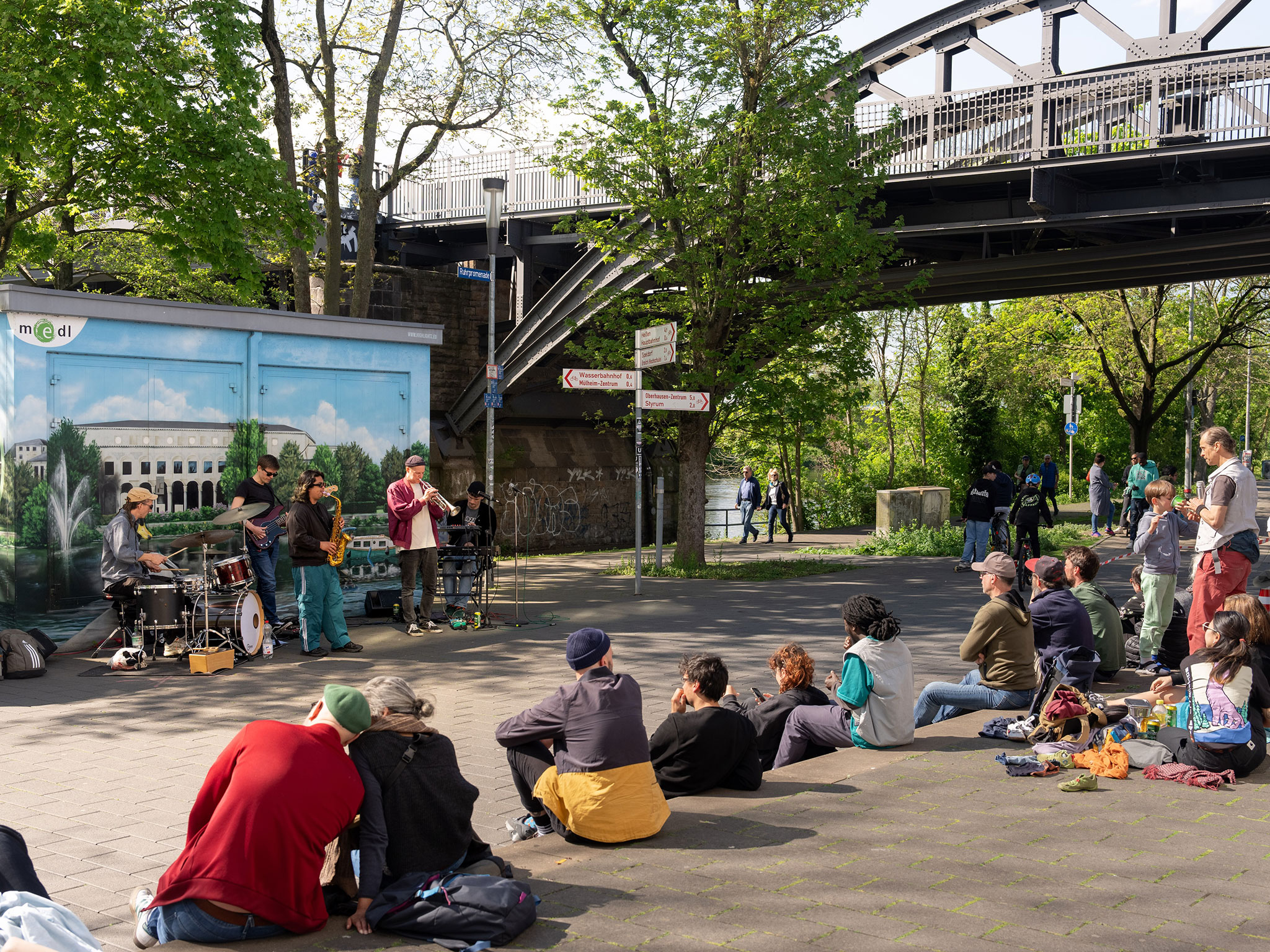 Conveyor Bridge at Zollverein Coking Plant, UNESCO World Heritage Zollverein, Essen. Photograph by Dirk Rose.
Conveyor Bridge at Zollverein Coking Plant, UNESCO World Heritage Zollverein, Essen. Photograph by Dirk Rose.
In a context where urban planning is shaped by political and economic decisions, and well-intentioned theoretical projects and diagnoses fail to mitigate the force of politics, there is a need to create spaces for critical reflection and transformative proposals. This is what the European Nomadic Biennial, Manifesta, is about. More than a traveling exhibition, it is an urban incubator that fosters dialogue between art and urban planning.
